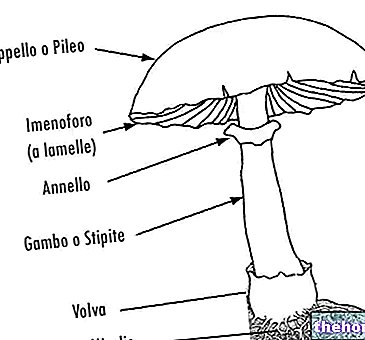In collaboration with Dr. Eleonora Roncarati
Prevention of fermentation or PASTEURIZATION
Prevention of fermentation presents additional technological problems. This is the only microbiological alteration that honey can undergo and is due to the presence of yeasts which find their ideal development environment in concentrated sugar solutions (osmophilic yeasts).

The first method consists in taking all possible precautions to try to extract only honeys with a water content of less than 18.0%. If this is not possible, there are various techniques to reduce the water content of honeys that are too moist by means of forced evaporation. They are easier to make on honey still contained in the combs, when the surface / mass ratio is favorable for a rapid exchange of humidity with the surrounding environment.
Good results are obtained by circulating between the honeycombs contained in the supers a stream of hot air (at a temperature not exceeding 35 ° C) produced with an appropriate system (boiler, fan and thermostat); in 24 hours there are decreases in humidity of 1 - 3%. It is essential to dispose of the air charged with humidity that comes out of the stack of supers subjected to the procedure with an appropriate suction system. Similar results can be obtained with dehumidifying machines (which remove humidity from the environment). In this case the supers must be placed in a reduced environment isolated from the outside air, so that the dehumidification process is carried out by the honey and not by the external environment. Both systems can be adapted to the concentration of honey already extracted from the combs: in this case, a structure must be built that allows the honey to be adequately exposed to the current of hot air (which may be hotter than the temperatures imposed on the treatment of honey in honeycomb) or the dry environment generated by the dehumidifier. Honey, for example, can be made to flow on an inclined plane, or made to fall in thin streams or distributed on the surface of rotating discs or continuously stirred.
The last industrial alternative is the use of vacuum concentration systems, adapted from those commonly used in the canning industry for vegetable juices (fruit juices, tomato concentrate, jams), which can operate extremely efficiently at temperatures below 45 ° C. The honeys concentrated with these systems, if well used for products in which the fermentation process has not yet begun, do not undergo significant degradation.
The other family of fermentation prevention systems is based on the inactivation of yeasts. The inactivation of the yeasts is done with heat (pasteurization): to destroy the osmophilic yeasts it is necessary to heat at 60 - 65 ° maintained for a few minutes. Similar treatment conditions can be implemented only with industrial systems that allow rapid heat exchange in order to keep the honey at a high temperature only for the strictly necessary time (heat exchangers in thin layer, tubes or plates). Generally these pasteurization processes are carried out with the dual purpose of preventing fermentation and favoring the conservation of the liquid honey: in this case, the treatment is carried out at a temperature of 77 - 78 ° C for 5 - 7 minutes, immediately before being put into jars.
The preparation of liquid honey
Preparing honey for the market has to deal with the natural tendency of many honeys to crystallize. On a commercial level, manufacturers approach the problem in different ways.
If the appearance of the honey does not represent a limiting factor, no particular measures are taken and the honey is marketed as it is spontaneously found; it is however useful to try to avoid that the product undergoes evident transformations during the marketing period (for example that crystallizes during marketing), as any change is viewed by the consumer with suspicion; moreover, it takes place outside the control of the producer. For other markets, honey is rigorously presented in a liquid state and, for this reason, it is often necessary to re-melt it or treat it to prevent crystallization.
Alternatively, an attempt is made to accelerate crystallization in order to present it in a constant manner and with pleasant characteristics both in terms of appearance and use.
Some honeys, on the other hand, remain naturally liquid for a long time, for example if their glucose content is naturally low (locust honey, chestnut honey, fir honeydew) or if the water content is high or if they are kept constantly at temperatures above 25 ° C. These last two conditions are however in contrast with a good conservation of the product and therefore cannot be used to extend the life time in the liquid state.
Among the solutions commonly adopted to commercialize honeys in the liquid state that are crystallized, it is frequently adopted that of completely re-melting them (at 40 - 50 ° C) shortly before sale is among the most adopted. The fusion can be done before or after the potting, but the second solution is, for the effects of the results, much more effective, as it is easier to check that the fusion has been complete and the risk of early re-triggering is excluded. crystallization with the manipulations of the product following the melting. The maintenance of the liquid state, after a remelting of this type, varies according to the characteristics of the honey and the storage temperature. For honeys that have little glucose (glucose water ratio lower than 1,8) the shelf life is satisfactory For honeys with a higher glucose content, the shelf life is proportionally shorter.A further remelting is to be avoided, also because the large crystals that form in heated honeys require a greater amount of heat for complete remelting. In terms of product degradation, heating at 40 ° C for a day for melting purposes is much less severe than prolonged storage for months at temperatures that inhibit crystallization (above 25 ° C).
At an industrial level, more complex preparation techniques are used, which in addition to dissolving the crystals present, delay recrystallization and can therefore also be used for honeys with an average glucose content.
First of all, the honeys are selected and blended to obtain products with constant characteristics and with a glucose content that is not excessive. The honey is partially melted in a hot chamber, transferred to a heated tank where it is mixed and melted almost completely, then filtered and subsequently subjected to a short heating at high temperature (pasteurization at 78 ° C for 5 - 7 minutes) with a layer exchanger subtle. This, together with the next one, is the key step of the treatment, as heating at high temperature, in addition to destroying the yeasts present, also dissolves the glucose microcrystals which could subsequently re-trigger crystallization. Before cooling, the hot honey can be filtered more or less "pushed". Filtration that eliminates all the microscopic solid particles contained in honey is prohibited in European countries, as it is believed that this removes some of the substances that determine its value from the honey and because it effectively prevents the control of its geographical origin and botany of honey, feasible through the identification of the microscopic elements naturally contained in it.
The passage in a vacuum deaeration station helps to prevent the risks of recrystallization, as well as eliminating the formation of the unsightly foam collar in the jammed product. The honey is then cooled to the jarsing temperature (57 ° C according to the "school" americana, Townsend, 1975, 35 ° C according to the European one, Gonnet, 1977), again by means of thin-layer and potted heat exchangers, in washed or dry-cleaned jars.
A further step which, according to some American authors, would contribute to prolonging the life in the liquid state is constituted by a rapid cooling of the product in jars and a conservation of this for 5 weeks at 0 ° C, before being placed on the normal commercial circuit. with this type of treatment the results are variable, in terms of conservation in the liquid state, but more constant and prolonged. The critical step of the process is represented by the phases that follow the pasteurization: all movements (mixing, turbulence, sliding, vibrations) or disturbances (friction in the pot, air entrainment, dust from the vessels) that the liquid product undergoes tend to re-trigger crystallization.
Other articles on "Honey Production: Pasteurization and Techniques to Keep It Liquid"
- Honey Production: Uncapping, Honey Extraction, Decanting and Filtration, Heating
- Honey - Definition, Types of Honey and Production Techniques
- Honey Production - Guided Crystallization, Potting and Storage
- Honey - Storage and Labeling
- Honey and Diet - Composition and Nutritional Properties




























